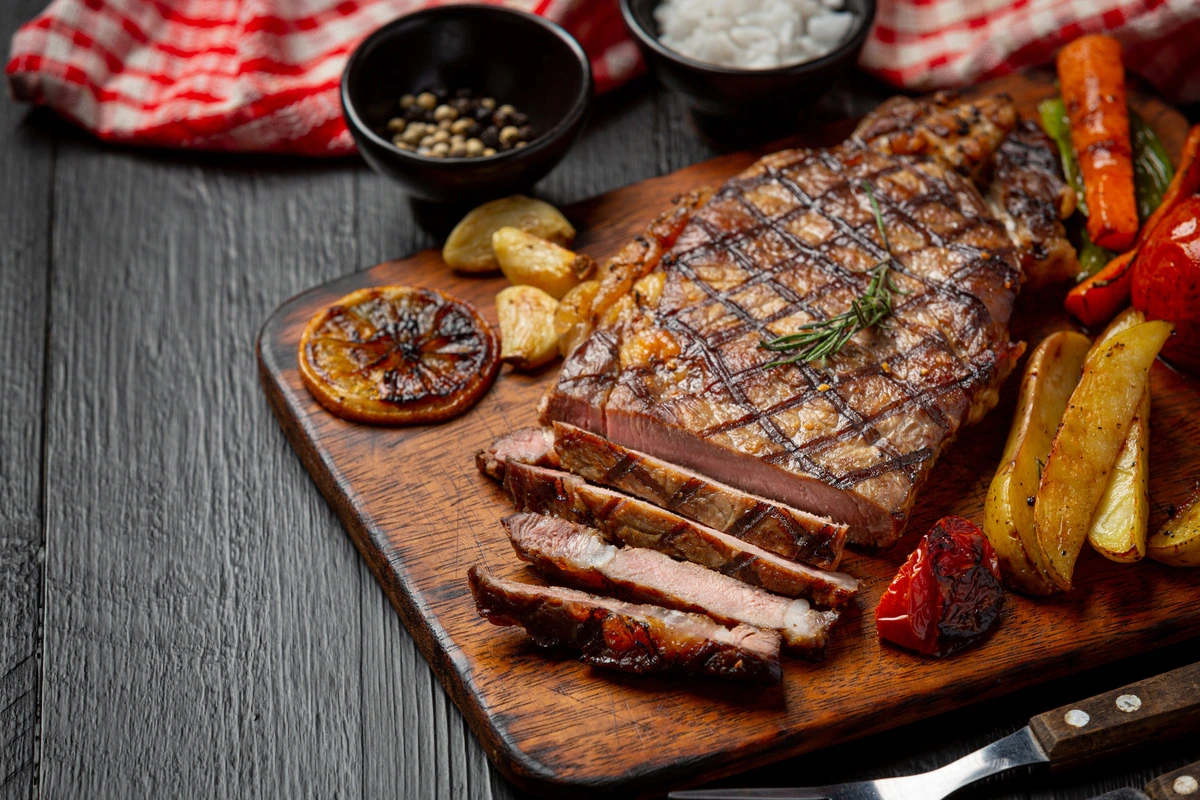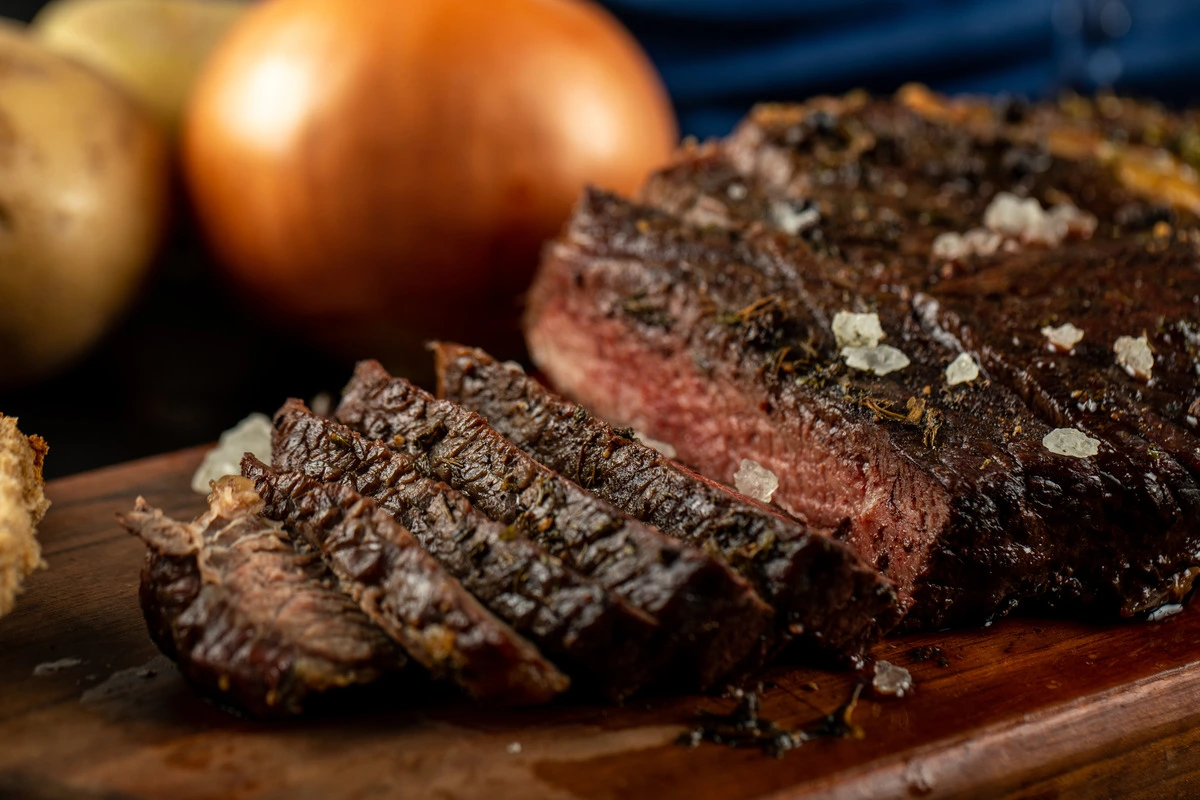Brisket is a popular cut of meat, especially for those who love barbecue. However, when you walk into a grocery store, it might not always be labeled as simply “brisket.” Understanding the different names and labels can help you make the best choice for your culinary needs.
What is Brisket?
Brisket is a cut of meat from the breast or lower chest of the cow. It is known for its rich flavor and is one of the nine primal cuts of beef. This cut is prized in many cuisines, from Jewish deli sandwiches to Southern barbecue.
Brisket is a large, tough cut of meat that benefits from slow cooking methods, such as smoking, braising, or slow roasting, to become tender and flavorful. The key to choosing the right brisket at the grocery store lies in understanding how it might be labeled.
Common Names for Brisket in Grocery Stores
When you’re looking for brisket in a grocery store, it might not always be labeled as “brisket.” Here are some common names you might encounter:
- Brisket: The most straightforward label. If you see this, you’re good to go.
- Flat Cut or First Cut: This is the leaner portion of the brisket and is often used for corned beef or when you want a more uniform, leaner piece of meat.
- Point Cut or Second Cut: This cut is fattier and is often preferred for barbecue due to its richer flavor.
- Packer Brisket: This term refers to a whole brisket that includes both the flat and point cuts. It’s typically found in larger grocery stores or specialty meat shops.
If you’re shopping at a larger store like Traeger Grills or a specialty butcher, you might find different labels, so it’s important to know what you’re looking for.
Types of Brisket Cuts
Understanding the different cuts of brisket can help you decide which one is best for your dish. The two main cuts are:
- Flat Cut (First Cut): This cut is leaner, with less marbling and fat. It’s easier to slice and is often used for dishes like corned beef.
- Point Cut (Second Cut): This cut is thicker, with more fat marbling, making it ideal for smoking or slow-cooking methods where you want the meat to stay moist and flavorful.
Some stores may also sell a whole brisket or Packer Brisket, which includes both the flat and point cuts. This option is great if you’re cooking for a crowd or want to try your hand at a traditional barbecue. For more on how to locate specific cuts, check out this guide on finding brisket near me.
Where to Find Brisket in the Grocery Store
Brisket is typically found in the meat section of the grocery store, often near the butcher counter or in the frozen meat section. However, depending on the store’s size and location, it might be labeled differently or require a special order.
- Butcher Counter: Ask the butcher if they carry brisket. Sometimes it might not be displayed but can be cut to order.
- Frozen Section: Some stores, especially smaller ones, might only carry frozen brisket. This is more common in stores that don’t have a full-service butcher counter.
- Special Order: If you can’t find it, ask if the store can special order a brisket for you. This is common at places like Safeway or Whole Foods.
How to Choose the Best Brisket
When selecting a brisket, there are a few things to keep in mind:
- Marbling: Look for a brisket with good marbling. The fat will melt during cooking, adding flavor and tenderness to the meat.
- Size: Depending on your needs, choose a brisket size that suits the number of people you’re feeding. A whole brisket can weigh between 10 to 20 pounds, while smaller cuts will weigh less.
- Packaging: If you’re buying a cryopacked brisket, check for any excessive liquid in the package, which could indicate it’s been frozen and thawed multiple times.
Price Comparison and Budgeting
The price of brisket can vary depending on the cut, quality, and where you’re buying it from. On average, you might expect to pay:
- Flat Cut: $8 to $10 per pound.
- Point Cut: $6 to $8 per pound.
- Packer Brisket: $5 to $7 per pound.
Prices can fluctuate based on the season, availability, and whether the meat is grass-fed or organic.
Cooking Brisket: Methods and Tips
Once you’ve chosen your brisket, it’s time to cook it. The most popular methods include:
- Smoking: Ideal for a point cut, smoking brisket gives it a deep, rich flavor. This method can take anywhere from 8 to 14 hours, depending on the size of the brisket.
- Braising: A good choice for a flat cut, braising brisket in liquid (like beef broth or wine) helps break down the tough fibers, resulting in tender meat.
- Slow Cooking: Perfect for both cuts, slow cooking allows the brisket to become tender over several hours without much attention.
If you’re interested in grilling, you might also like this ultimate guide to grilled chicken cordon bleu, which pairs well with a side of smoked brisket.
FAQs
What is the difference between Flat Cut and Point Cut Brisket?
- Flat cut is leaner and easier to slice, while point cut is fattier and more flavorful, making it ideal for smoking.
Can I use brisket labeled as “Corned Beef”?
- Yes, but be aware that corned beef is brisket that has been cured in brine, which gives it a different flavor and texture.
How long can I store brisket in the freezer?
- Brisket can be stored in the freezer for up to 12 months if properly sealed. Make sure to thaw it slowly in the refrigerator before cooking.
Is brisket always beef, or are there other types?
- While brisket typically refers to beef, other meats like lamb or pork have similar cuts that can be used in recipes calling for brisket.
How do I know if I’m buying a good brisket?
- Look for good marbling, a uniform shape, and avoid any packaging with excessive liquid.
Conclusion
Understanding what brisket is called in the grocery store can make your shopping experience much easier. Whether you’re planning to smoke a point cut or braise a flat cut, knowing how to identify and choose the best brisket will ensure your meal is a success. Don’t hesitate to explore different cuts and cooking methods to find your favorite way to enjoy this delicious cut of meat. For those who enjoy a bit of variety, consider trying Mexican pizza as a side dish or creative way to use your brisket leftovers.



